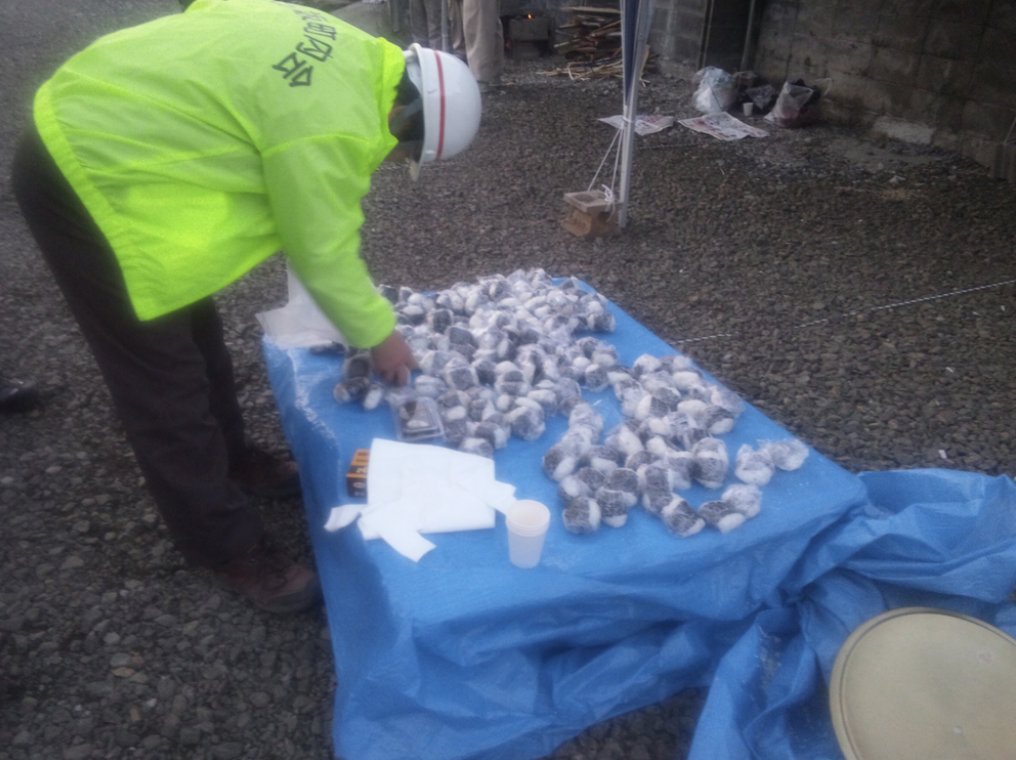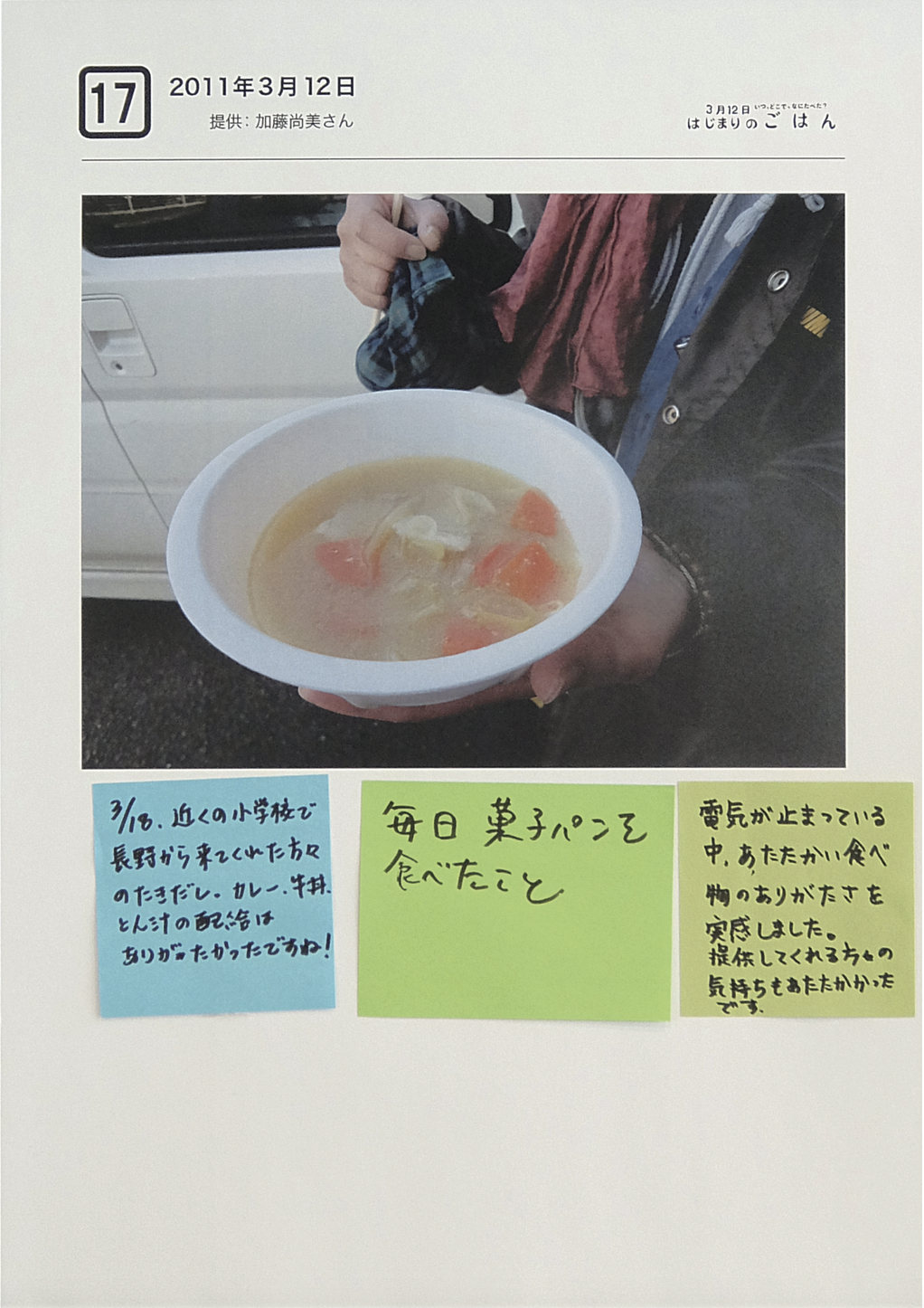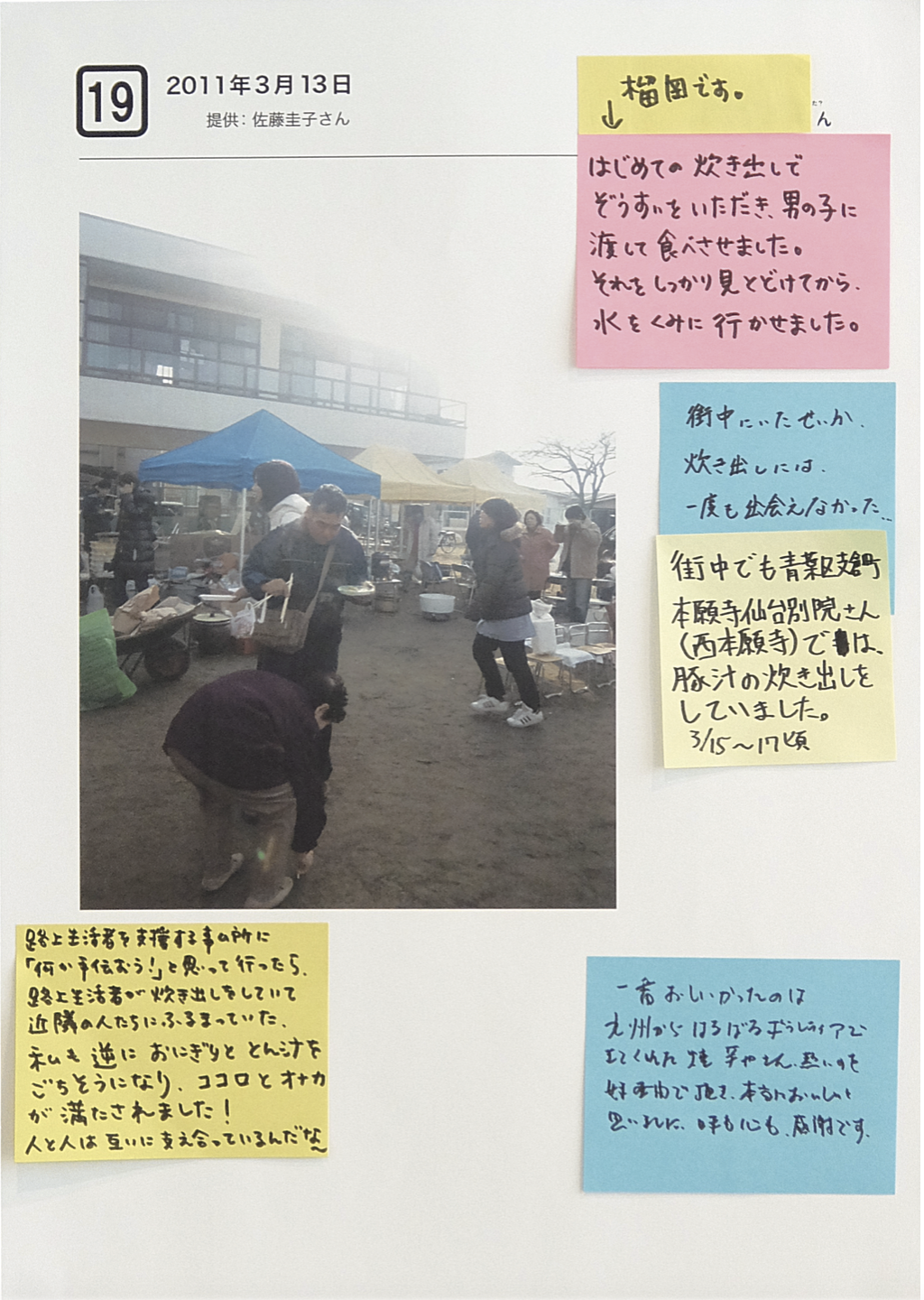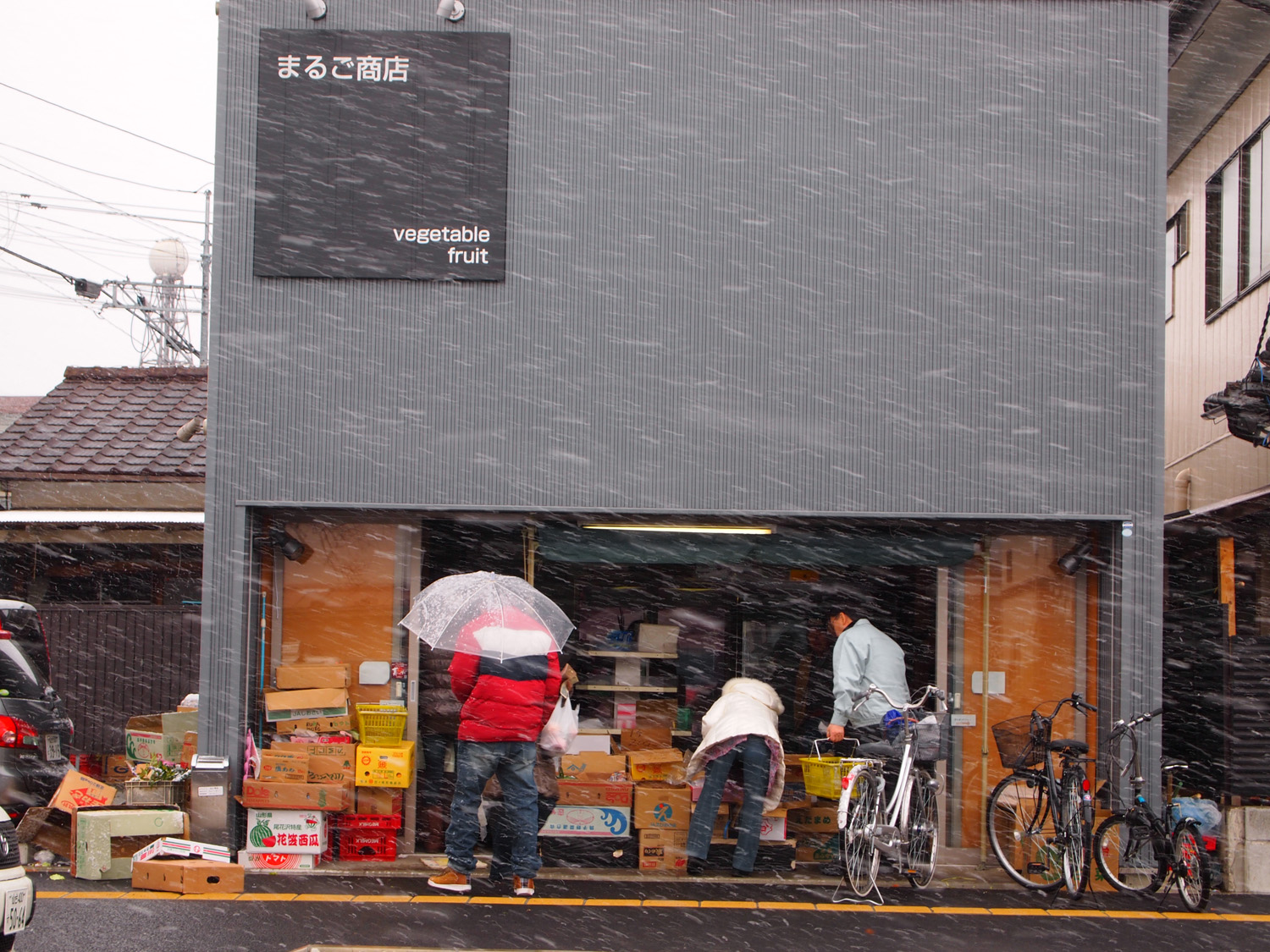Being Unable to Get Food Gave Me an Opportunity to Think About My Life Up Until Then
March 11 Fixed-Point Observation Photo Archive Project Open Salon, at the Thinking Table on October 27, 2012
This article was translated Chloe Brooks, Callysta Caraballo, Kimberly Fenn, Sarina Katznelson, Nicholas Malik, Ting-Chieh Ou-Yang, Isabella Tinte, and Yuyang Zhang. This collaborative translation was part of an advanced Japanese language class at the University of Washington taught by Justin Jesty.
Narrator: Tomohiro Ono
Interviewer: Masami Satō (20th Century Archive Sendai, NPO)
■ A Building With Cracks in the Wall
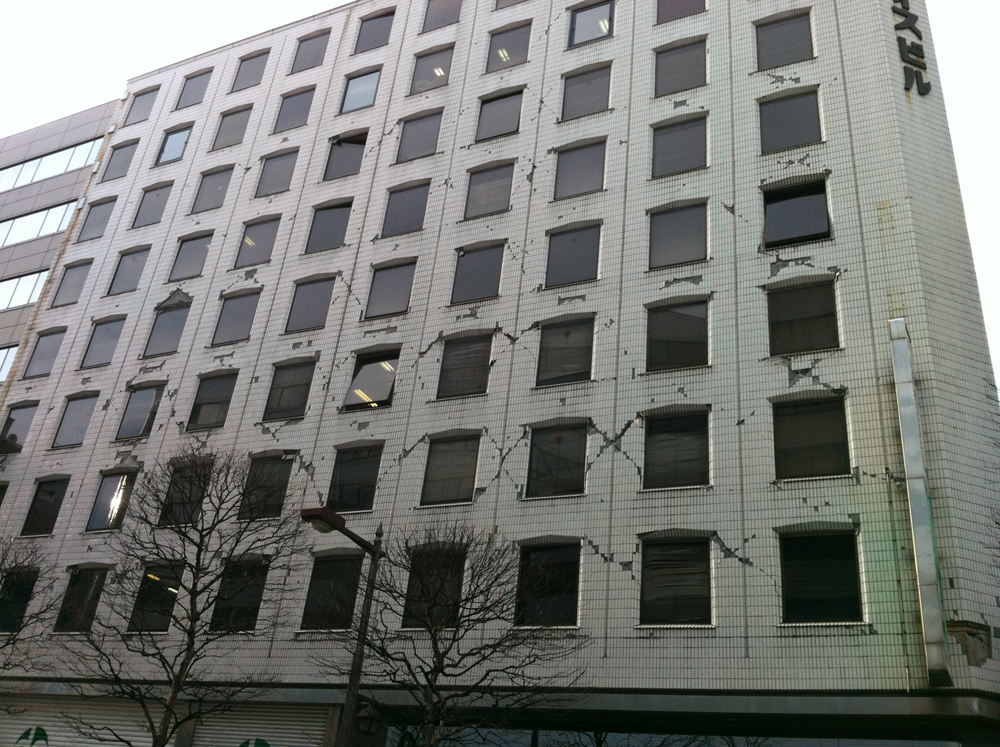
March 14, 2011, 16:04 Nichome, Itsutsubashi, Aoba-ku, Sendai
[Ono:] I was an office worker. All the employees of my company evacuated outside when the earthquake occurred. We were given verbal instructions that whoever could make it into the office would come to work 3 days later, and then everyone went home. I was lucky that my house is bicycle-commuting distance, so I went into work 3 days later. We tidied things up that had fallen over in the office but that itself only took 1 to 2 hours. We’d finish up in the morning and say “that’s it for today, see you tomorrow” and then were able to go back home after noon. Things continued that way for several days. I wasn’t thinking of saving the photos for anyone but I wanted to keep a record of changes to places that were familiar to me so I started taking photos with my cell phone.
[Satō:] So you took all of your photos with your cell phone?
[Ono:] That’s right. I took them with my iPhone. I think I took this one on my way home from work. When I saw this nearby building I noticed cracks in it, in this pattern that gave me a bad feeling.
■ The bookstore with the books still lying scattered on the ground
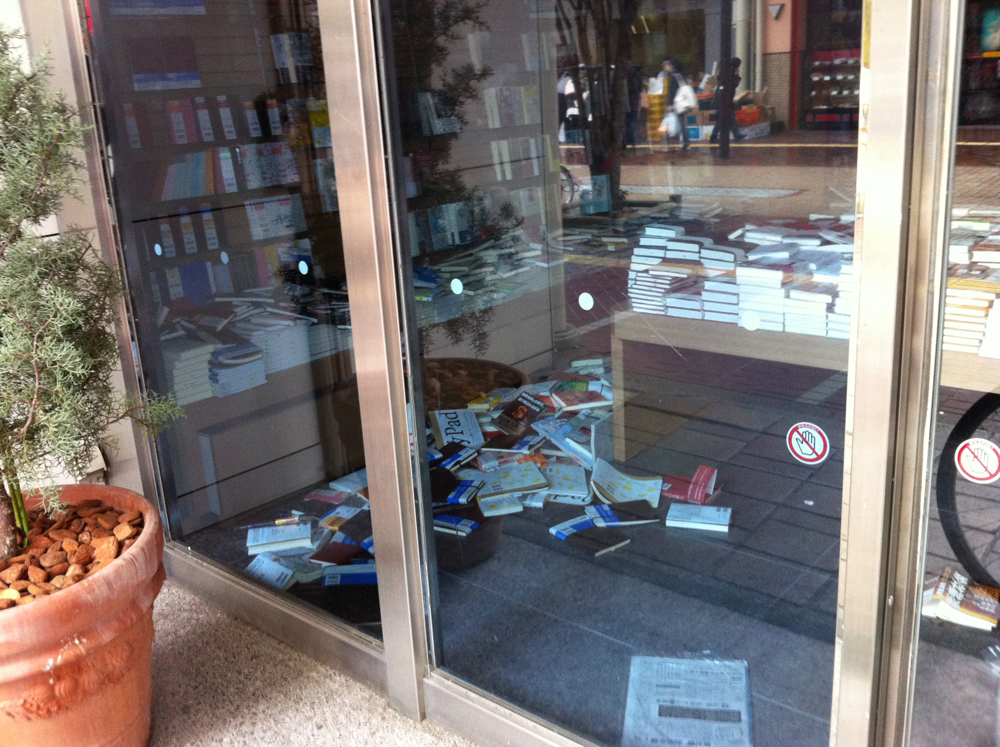
March 17, 2011, 13:06 Ichibancho, Aoba-ku, Sendai
I took this photo when I was passing through a shopping arcade after work. I think it shows something about the situation in town. I took it on the 17th so 6 days had passed since the earthquake but the books in this bookstore were still lying scattered on the ground. This store is in the Ichiban-cho shopping district, and still relatively new, but I think no one could enter it because the building was getting old.
■ In the midst of a supply shortage, people line up for Marché Japon in Ichiban-Cho
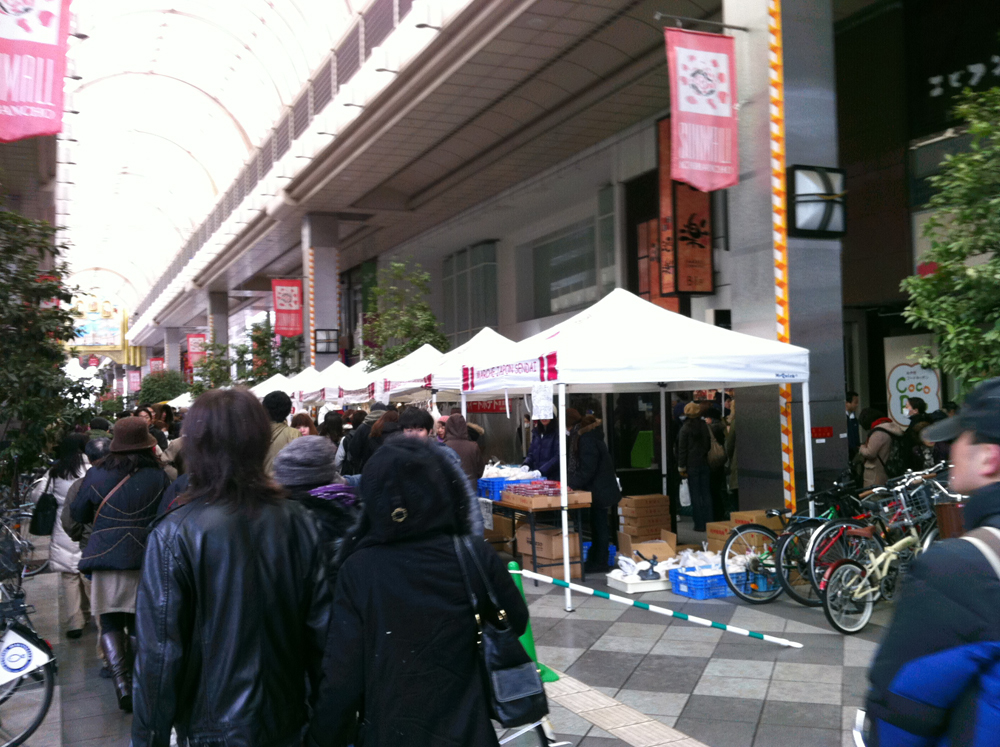
March 17, 2011, 13:24 Ichibancho, Aoba-ku, Sendai
When I happened to be passing through shopping district, there was a long line for Marché Japon (A citizen-run market started in 8 cities around the country in Autumn 2009 with the support of the Ministry of Agriculture, Forestry and Fisheries. Ended in Sendai March of 2013.). Those days, no matter where you went, you really couldn't get your hands on anything. Supermarkets had long lines as well. So when I took this picture I thought the line was basically the same kind of situation.
■ The convenience shelves with the foods all sold out
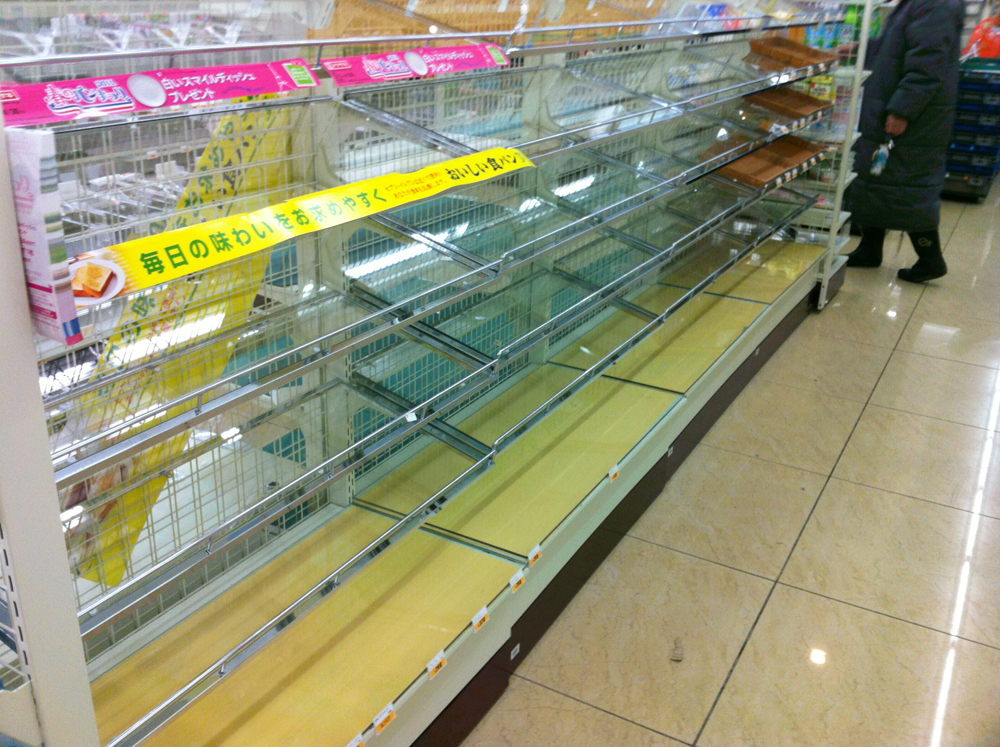
March 17, 2011, 11:25 Aoba-ku, Sendai
This is a convenience store I entered when I was walking around looking for food supplies. It was the first time I’d ever seen a convenience store without anything on the shelves. I think all the convenience stores were like this. If there was anything you could actually buy at this convenience store it was only things like gum and razors, and the like. I got the impression customers were coming in but left without buying anything.
[Satō:] Starting in February 2012 we held a panel exhibition at 115 different locations all around Japan from Kyushu to Hokkaido that featured people’s photographs of the disaster that they’d shared with us. The exhibitions were divided into two parts: half photos that shed light on the disaster itself, half that focused on people’s daily lives after the disaster, but we heard that these photos of convenience stores with nothing to sell were quite shocking. On the visitor surveys we often saw statements about how people thought they’d be fine without stockpiling things at home because there were convenience stores nearby and they’d be OK going to them to buy stuff, even if there was an earthquake, along with comments that this was the first time they realized that they actually wouldn’t be able to use them. That is why I think when you see this kind of photo in front of your eyes, it is easy to understand from the photo that you really have to be prepared.
■ Sake brewery covered by tarps
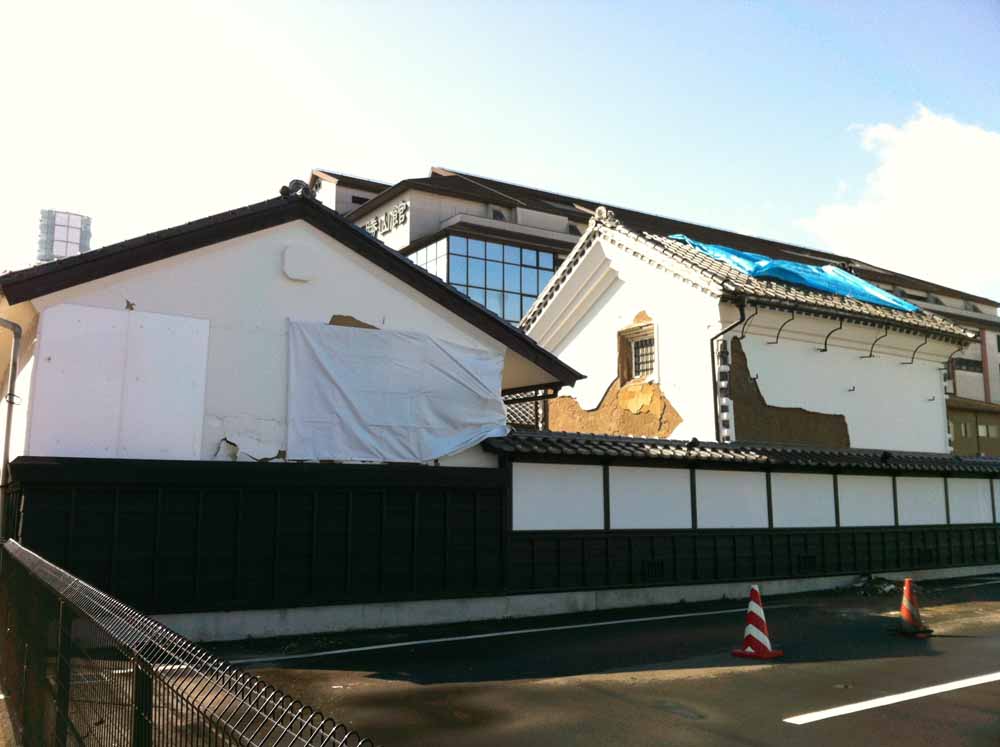
March 23, 2011, 09:05 Nichome, Kamisugi, Aoba-ku, Sendai
[Ono:] This is a storehouse decorated with sake bottles and things, next to the Shozankan (Wedding Hall). I took this one because it’s on the road to the center of the city from my house. Things in this area around the storehouse, for instance the Katsuyama Bowling Alley, well, I don’t know if they are still operating … they may have been completely demolished by now. That was when I saw with my eyes and understood the harshness, the severity of the situation. Even roof tiles were an issue people talked about—there was a shortage of roof tiles. I think that's why it ended up covered with blue tarp. Here the walls were falling down but there weren't enough contractors to fix them. I felt that might come through in the picture when I took it.
[Satō:] When I interviewed you a year ago, you had said, “I feel more strongly after the disasters that I should make a point of enjoying things.” It might be a surprise for you to bring it up so suddenly but do you still have that feeling?
[Ono:] Well, let’s see, maybe it’s best to look back over things. I guess I do feel that the photograph of the convenience store is symbolic. The big chain stores and convenience stores and the like all stopped working, really all at once. When they stopped working I realized that this is what I’d been relying on in my daily life and that was, well, it was just a big shock. I think I mentioned when I was walking around looking for food, but the places where you could actually buy food at that time were small individually-run stores that had always been there in town but which, I’m sorry to say, I had always just passed by. I was actually able to make more purchases at places like that, and that was also a big shock, or rather, a trigger for me to think about my lifestyle up until then. After living through that, or, what’s a better way to say it, when I had the chance to reconsider my lifestyle—and this might be what I was getting at when I mentioned enjoying things more—I realized I wanted to do what I could to really integrate those individually-run stores into my life. They had sold me things and helped me at that time and they had always been there. That feeling is still with me and hasn’t changed.
[March 11 Fixed-Point Observation Photo Archive Project]
This project archives citizens' documentation of the circumstances right after the disaster, and the circumstances of the subsequent reconstruction and recovery through periodic fixed point observation in the cities and towns of Miyagi Prefecture that were affected by the Great East Japan Earthquake, in order to leave them to posterity. We continue to gather documentarists from among the citizens, and periodically host spaces for information exchange and other activities in the form of Open Salon. These fixed point observation photos are stored and published in both the 20th Century Archive Sendai and the center for remembering 3.11(sendai mediatheque), as a part of “Records of the Great East Japan Earthquake -Citizens’ Collaboration Archive”.
website: http://www.20thcas.or.jp/
[Thinking Table]
The Thinking Table is our name for a space where people can get together and share stories, and think about disaster recovery, the regional community, and expressive activities. It is held in the studio on the 7th floor of Sendai Mediatheque. There are a variety of events including talks, public meetings, and activity reports by citizen groups.
| Recorded on | March 14-23, 2011 | |
|---|---|---|
| Recorded by | Tomohiro Ono | |
| Recorded at | Ichiban-cho, Aoba, Sendai, Miyagi | |
| Series | ||
| Keywords |








